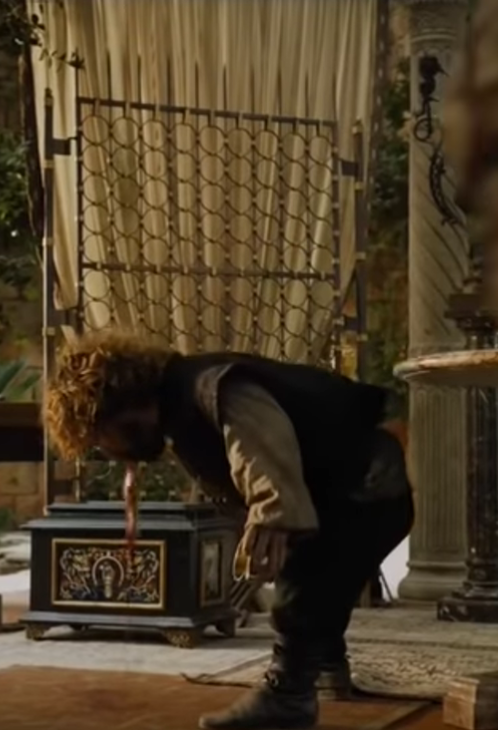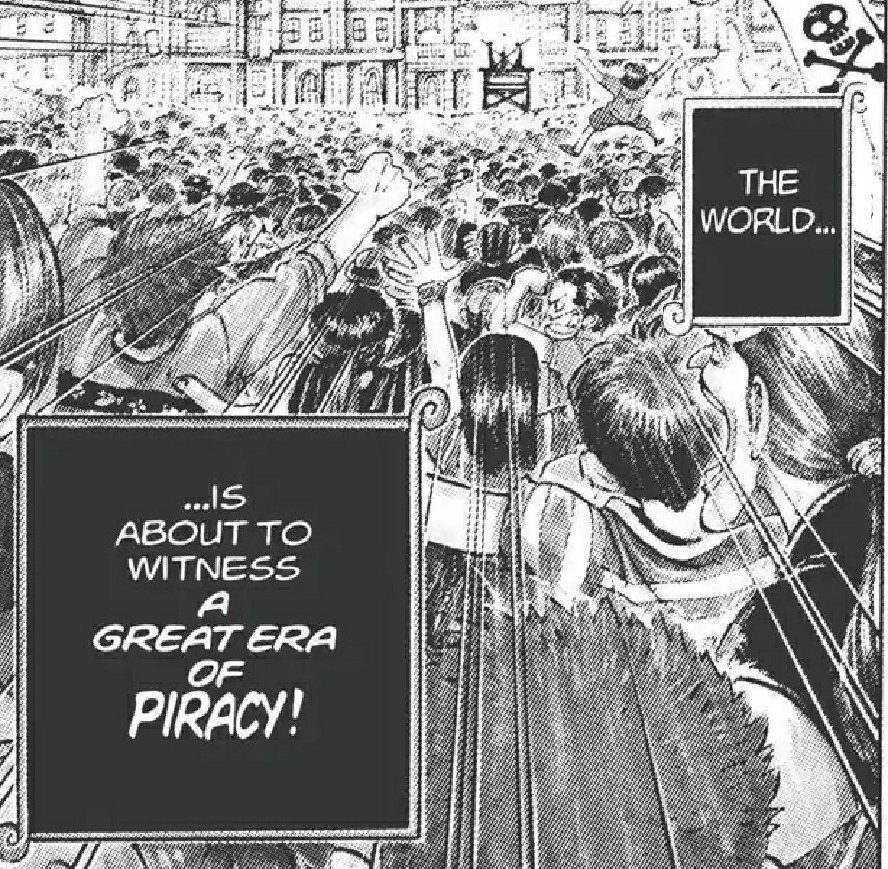In the spirit of largely unnecessary, solipsistic best-of lists, I’d like to humbly present GAMbIT’s list of the best and worst of TV this year. It was a damn good year for television, and as such I was unable to get to everything, which brings me to a very important point: The Knick is not here. The Knick absolutely would have been here, had I finished it in time (I was trying to do so before posting, but couldn’t manage it). I don’t need to tell you exactly why I’m just now catching up on the show, but rest assured this whole list has a giant asterisk next to it, an asterisk shaped like Clive Owen’s face. Anyway, before we get started, let’s indulge in some yearbook-style superlatives.
Best surprise: Halt and Catch Fire, season two. Who saw this coming? AMC’s 1980s-set tech drama stunned everyone this summer with confident, gutsy storytelling. Lee Pace in particular really came into his own, as he shed Joe MacMillan’s Don Draper Lite persona that prevented HaCF’s first season from excelling. In the process, Joe became one of TV’s strangest, most compelling villains. (Runner-up for Best Surprise: “The Truth” episode of Wayward Pines. The intake of air you heard was the sound of thousands of critics reconsidering the whole show.)
Worst surprise: The Walking Dead, season 6A. After a fantastic string of episodes, The Walking Dead painted itself into a corner – or maybe under a dumpster – with how badly it botched the mystery surrounding Glenn’s apparent death. Not only was his survival an inexcusable narrative contrivance, but it cost the show an amount of goodwill that will be nigh-impossible to regain. On a show where seemingly no one was safe (with the obvious exception of Daryl), Glenn’s survival showed that the stakes have been lowered dramatically. The only people killed in the first half of the season were disposable Alexandrians, and the show’s newfound attachment to its core cast has rendered it somewhat toothless. Is anyone really scared of Negan anymore? I mean, except for maybe Heath?
Best addition to a cast: Richard Armitage as Francis Dolarhyde in Hannibal, obviously (more on him later). Also Lars Mikkelsen as Russian president Viktor Petrov in House of Cards – Mikkelsen’s presence alone elevated HoC’s lackluster third season.
Worst addition to a cast: the Sand Snakes in Game of Thrones. GoT’s fifth season was uneven from the get-go, and nowhere is that better exemplified than in Oberyn Martell’s trio of bastard daughters, favorites of book readers, who absolutely failed to live up to the hype. In combat they were slow and unengaging, and their storyline, which held so much promise, fizzled out anticlimactically.
Best character on a bad show: Chad Radwell, Scream Queens. Ryan Murphy, with Scream Queens, tried to mix horror and comedy, but screwed up the formula often enough to wind up with camp. But for all the show’s faults, it did give us Glen Powell’s pitch-perfect performance as Chad, head of the Dickie Dollar Scholars, budding necrophiliac, and packing enthusiast. Powell took the show and ran with it, and even when Scream Queens indulged its worst tendencies, any scene with Chad was guaranteed to be fun – and sometimes even a little scary.
Worst character on a good show: Robyn, Jessica Jones. Robyn was introduced as a disembodied shriek, and somehow got worse from there. While Jessica Jones was based on a comic, Robyn was seemingly imported in from a cartoon. She was an unfortunate stumbling block to an otherwise phenomenal debut season. For all the skill with which Jessica Jones tackled sexual abuse, trauma, grief, and recovery, it doesn’t change the fact that “Where are his little toes?” might the worst line of 2015.
And now on to the list itself. Keep in mind the order is pretty arbitrary, except for #1.
10. Better Call Saul
As far as spin-offs go, we’ve gotten way more Joeys than Frasiers. Even with the pedigree behind Better Call Saul, it was hard not to have trepidations going into the show. Thankfully, showrunner Peter Gould removed all doubt by utilizing a ludicrously strong ensemble and top-notch writing. The show existed in the same universe as Breaking Bad, but managed not to be dependent on the connection. Although we know the fate of Bob Odenkirk’s Saul Goodman from the first minutes of the series premiere, Better Call Saul was able to assert its identity and make a strong argument for its necessity. Far removed from being the comic relief of Breaking Bad, Saul is a tragic, blackly humorous character, one straight out of the Coen brothers’ playbook. Odenkirk, a veteran comedic actor, showed range heretofore unseen, as he imbued Saul with a real sense of humanity, allowing the viewer to see exactly when he started to lose his morals and his soul. And Jonathan Banks, in a single episode, did more work with his character Mike Ehrmantraut than most actors do with an entire season. Better Call Saul was deliriously well-written and performed, and had one of the best debut seasons of any show in recent memory.
Best episodes: “Five-O,” “Hero”
9. Rick and Morty
For its second season, Rick and Morty chose to redefine itself as genuinely great sci-fi. The imagination on display this year was truly jaw-dropping, as seen in bits like the hilarious, melancholy video game “Roy: A Life Well-Lived.” Bizarre digressions like that are Rick and Morty’s bread and butter, and do an amazing job of expanding the show’s already massive universe. Part of great science fiction is the philosophical implications of the genre, which Rick and Morty never shied away from. The show became truly existential with its exploration of multiple universes – and the multiple versions of its characters that inhabit them. It’s a daunting task, which the show was more than up to. But all that notwithstanding, Rick and Morty was never less than hilarious, as phrases like “Get schwifty” entered the cult nerd lexicon. Bonus points for what might be the funniest line of the year: “Fuck you, God! Not today, bitch!”
Best episodes: “A Rickle in Time,” “Mortynight Run”
8. Mr. Robot
No part of Mr. Robot should have worked. It was a thriller about hackers…on USA…co-starring Christian Slater. How, then, did this become one of the best, most relevant shows of the year? Everything about it worked: the claustrophobic cinematography, the hallucinatory portrayal of New York, the indecipherable tech jargon, and most of all Rami Malek’s commanding performance. Creator Sam Esmail presented a mesmerizing portrait of loneliness and addiction in the digital age, and managed to comment on mental health and the necessity of grieving. Mr. Robot sunk its claws into you and refused to let go, and the most compelling thing about it was that, watching its menagerie of damaged, haunted men and women, you saw something of yourself in them.
Best episodes: “eps1.0_hellofriend.mov,” “eps1.3_da3m0ns.mp4”
7. Netflix
Okay, this might seem like a cheat, but all these shows represent the artist-first, experimental mentality that made it so that Netflix had a better year than any other network – better than FX or AMC, better even than HBO. Unbreakable Kimmy Schmidt dealt with trauma in an unexpectedly hilarious, eminently quotable fashion, and had the best theme song of any show all year (to say nothing of the masterpiece that is “Pinot Noir”). Master of None deftly explored race, heritage, and dating in the twenty-first century, and felt like a natural extension of Aziz Ansari’s wonderful book Modern Romance (Ansari’s maturation as a comic has been one of the most compelling and believable transformations of the last few years). BoJack Horseman is the funniest show ever created about clinical depression, and its perfect second season mined that material with heartbreaking results. Wet Hot American Summer: First Day of Camp was an almost flawlessly executed exercise in absurdity. Marvel’s Daredevil and Jessica Jones proved to be necessary, even superior, extensions of the Marvel universe, and provided disturbing, enthralling portraits of guilt, rage, and survival. Bloodline, while occasionally sluggish, perfected the Damages formula, and Ben Mendelsohn gave one of the best performances on any show of the year. No other network showed the same respect to artistry, and it made for consistently compelling television.
Best episodes (in the order listed): “Kimmy Goes to School!”; “Parents”; “Escape from L.A.”; “Auditions”; “Cut Man”; “AKA Sin Bin”; “Chapter 11”
6. Show Me a Hero
The Wire’s David Simon made his triumphant return to TV, coming back swinging with Show Me a Hero. The HBO miniseries, done in conjunction with Crash director Paul Haggis, was an angry, melancholy look at the pitiful state of race relations in America, and its release could not have been more timely. Hero succeeded as well as it did thanks to a marvelous performance by Oscar Isaac, who was at times optimistic, delusional, weary, and eventually, suicidal. Show Me a Hero was a bitter polemic, but it was not without its moments of grace, seen in the gradual reformation of Catherine Keener, never better as a racist who thought she wasn’t. In just six episodes, Simon and Haggis took viewers through the emotional wringer, evoking a visceral reaction the kind of which is all too seldom on TV these days.
Best episodes: “Part Five,” “Part Six”
5. The Leftovers
Season one of The Leftovers was great. Season two was transcendent (and as long as I’m handing out superlatives, the show wins Best New Theme Song hands-down). The show jettisoned much of its first-season identity, going so far as to move from New York to Texas. An even bolder move was the break that The Leftovers made from conventional storytelling – this is, after all, a show that featured its main character singing Simon and Garfunkel in a hotel bar full of the dead. Justin Theroux has perfected his portrayal of Kevin Garvey; here he acts like a wounded animal: wary, and prone to fits of rage, paranoia, and delusion. It’s rare for a show to tackle mental illness in such a straightforward fashion (see Mr. Robot, above). The entire ensemble was magnificent, especially Carrie Coon, who richly deserves several Emmys she’ll likely be passed over for. The biggest tragedy of The Leftovers is that some refuse to watch it because they’re unhappy with how Damon Lindelof ended Lost. But if this show has proved anything, it’s that Lindelof shouldn’t be scorned for his last show, he should be celebrated for his new one. The Leftovers was about nothing less than what it means to be human, and like the human experience, I didn’t understand all of it – but that’s okay. Like the song says, I think I’ll just let the mystery be.
Best episodes: “A Matter of Geography,” “International Assassin”
4. The Americans
FX’s Cold War slow burn reached heights of unbearable tension in its stellar third season. The Americans is a spy drama in which tradecraft is never the sole reason for the show’s existence, and a Cold War thriller that chooses to eschew politics to focus on the divide within the Jennings family. Matthew Rhys and Keri Russell were predictably great (as was Noah Emmerich), but the breakout star of this season was Holly Taylor as their daughter Paige. As her parents’ lies unravel around them, and her, Paige loses her grip on all that she assumed to be constant: family, faith, even her nationality. Her decision at the end of the season – to expose her parents to her pastor – was one of the great cliffhangers of 2015, and left one agape, not just at the audacity of the storytelling, but at the achievement. It’s a shame that the excellence of The Americans is kept secret, like stolen microfilm, because for three seasons now it has been the best examination of the nature of truth, and good vs. evil, on television.
Best episodes: “Stingers,” “Do Mail Robots Dream of Electric Sheep?”
3. Fargo
Fargo – my pick for best show of 2014 – somehow got even better in its second season. Creator and showrunner Noah Hawley honed and focused his vision, and managed somehow to use a more compressed timeline to comment on sweeping themes like runaway capitalism and hopelessness. The performances were great across the board, from one-off appearances like Bruce Campbell as Ronald Reagan, to Patrick Wilson and Kirsten Dunst, whose mastery and knowledge of their characters made Fargo engaging, heartbreaking, and thrilling. The show came into its own as an ensemble drama, and further showed the mind-boggling scope of Hawley’s vision. This, like Mr. Robot, shouldn’t work, and there are probably parallel universes where Fargo is the worst show on TV. But in Hawley’s hands, Fargo has become appointment television, destined and designed to be analyzed, but more importantly enjoyed. And I didn’t even mention the flying saucer, the biggest mic drop of 2015.
Best episodes: “Loplop,” “The Castle”
2. Mad Men
Matthew Weiner’s Mad Men, by all accounts, ushered in the second Golden Age of Television, so ending it in a satisfying way seemed as though it would be impossible. Yet here we are, able to enjoy the totality of Weiner’s ode to ennui and identity. Weiner owes a debt to great American authors like John Updike and John Cheever – much of Mad Men’s final season had echoes of Cheever’s story “The Swimmer” – yet he never lost his own voice among those of his influences. Mad Men has entered the cultural canon, and should be discussed and dissected in the same way that great works of literature are. Taking detours into black humor and surrealism, Mad Men never failed to capture the spirit and the essence of America in a time of transition, as the country reconsidered itself in the wake of JFK’s assassination and the tumultuous 1960s. Mad Men is more than just a show now – it’s a genuine cultural artifact.
Best episodes: “The Milk and Honey Route,” “Person to Person”
Before we get to my #1 pick, which you have probably already guessed, let’s take a look at my pick for worst show of the year, which you could also probably guess…
Worst of the Year: Gotham
This wasn’t even a hard choice. I struggled with including or excluding certain shows from the Best Of list, to the point where I lazily lumped several Netflix shows together. But coming up with the worst show? Oh man, talk about a dumb question. Gotham was campy, silly, frustrating, stupid, and most frustratingly, occasionally actually good. Episodes like “Red Hood” and “Everyone Has a Cobblepot” were genuinely great installments, which just made the near-constant missteps that much more glaring. At times, the show was a cavalcade of unlikable, stupid characters. Selina Kyle is nowhere near as interesting as the show thinks she is, and the less said of the ersatz Joker the better. The bright spots – such as Sean Pertwee’s Alfred and David Mazouz’s Bruce Wayne – help to keep the show from being a complete disaster. But make no mistake, this show is mostly a disaster.
Worst episodes: “All Happy Families Are Alike,” “Scarification”
1. Hannibal
Byran Fuller’s bloody, beautiful fever dream came to a tragic end in its third season, but at least the show went out with something close to perfection. Hannibal effectively bifurcated its farewell season – which should really be called a victory lap – by setting its first half in Florence and its second half in Baltimore, where it tackled Thomas Harris’s novel Red Dragon. The Florence half was composed like a painting, as colors swirled and eddied, creating an impressionist kaleidoscope of violence, philosophy, and longing. The latter half of the season rested on guest star Richard Armitage’s broad, tattooed shoulders, and he filled the role of Francis Dolarhyde with terrifying aplomb. The Red Dragon saga was the scariest thing on TV all year – American Horror Story, take notes – and maybe the scariest thing about it was how easy Fuller made it all look. Hugh Dancy, Mads Mikkelsen, and the seemingly ageless Gillian Anderson were at the top of their games, playing roles that have been waiting for them their entire lives. Hannibal was a stunning, nearly miraculous achievement, and to paraphrase the Red Dragon, we owe Bryan Fuller awe.
Best episodes: “Digestivo,” “The Number of the Beast is 666”















